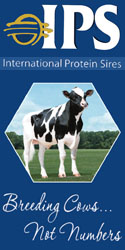 |
 |

|
|
|
Wisconsin Ag News Headlines |
 |
State Gypsy Moth Populations on the Rise
Wisconsin Ag Connection - 09/21/2007
Gypsy moth populations have been increasing to damaging levels in parts of Wisconsin, according to state forestry officials,
who stress that this is the best time of year for landowners to determine if trees on their property could be defoliated by this
pest next summer, and if so, to determine the best course of action to address the problem.
"Hot, dry weather this summer favored gypsy moth survival, and populations of the pest increased to levels that threaten
significant tree damage in many counties next summer," says Andrea Diss-Torrance, Gypsy Moth Program Coordinator with
the Wisconsin Department of Natural Resources Forestry Division. Counties where the gypsy moth outbreak could be
significant include, Adams, Columbia, Dane, Juneau, Kenosha, Marathon, Marinette, Milwaukee, Portage, Rock, Racine,
Sauk, Walworth and Wood.
While outbreaks in those counties next summer are likely, not all areas within those counties will be equally affected. Because
defoliation can vary, Diss-Torrance says it is important to check now and decide whether action is needed. To predict whether
an area is likely to be defoliated by gypsy moths next summer, landowners can survey for gypsy moth egg masses, and
Diss-Torrance says now is the perfect time to do that.
Gypsy moth egg masses are typically teardrop-shaped, 1 to 1.5 inches long, and are covered in a tan-colored felt. Egg masses
that will hatch next spring are firm to the touch. Old, empty egg masses are soft, bleached out, and covered with tiny holes.
Directions on how to survey for the pest are available on the Wisconsin Gypsy Moth portal Web page at
www.gypsymoth.wi.gov.
Other Wisconsin Headlines
|
|
 |


|
 |
|
Copyright © 2024 - Farms.com. All Rights Reserved. |
 |
|